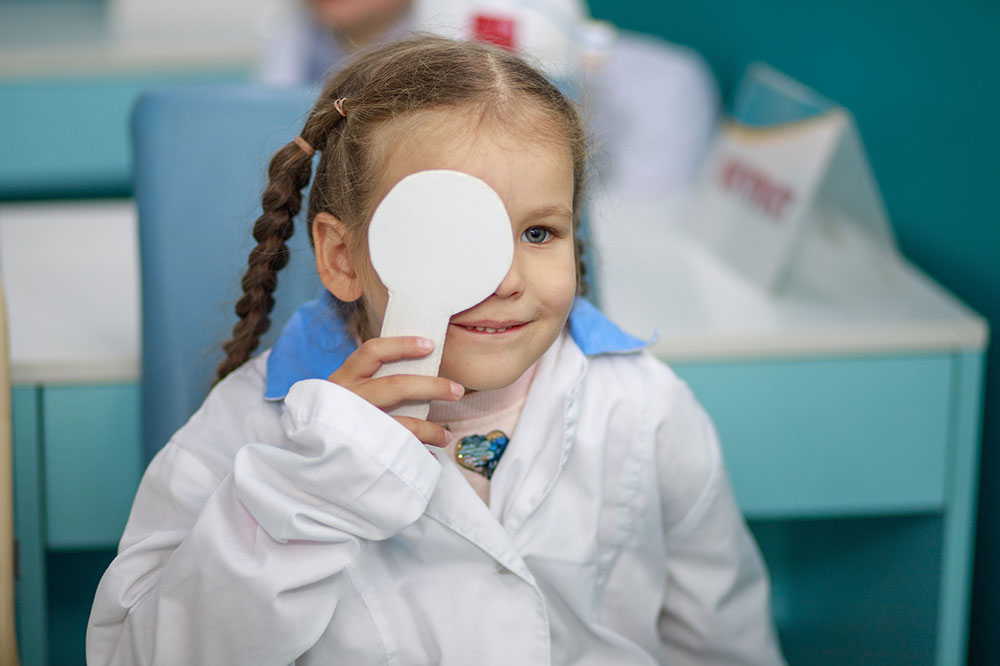
Lazy eye – Symptoms, causes, and management
Lazy eye, also known as amblyopia, is a visual impairment where one eye does not develop fully. If left untreated, the brain may start to ignore the image from the affected eye, leading to permanent vision problems. Typically, it starts in childhood between ages six and nine, and early diagnosis before age seven offers the best chance of complete recovery. It is essential to seek timely treatment to avoid any long-term complications.
Symptoms
Typically, a child with a lazy eye will find it challenging to focus with one of their eyes. Of course, the other eye compensates for this defect, but it makes the affected eye suffer more. The lazy eye, or the eye with impaired vision, cannot fetch clear images. Hence, the brain will not get clear data. Over time, it starts ignoring it. In some children, the stronger eye and the brain make up for the problem so well that the child cannot comprehend they have a problem. Consequently, lazy eye is usually diagnosed when the child undergoes a routine eye test.
Some of the lazy eye symptoms are as follows:
Double vision
Blurred vision
An eye turning inward, outward, downward, or upward
Eyes that do not work together
Weak depth perception
Hence, doctors recommend that a child undergoes a vision check, especially if they have childhood cataract, a family history of lazy eye, or any other eye condition. Further, if parents notice their child’s eye wandering, they must immediately consult a doctor.
Causes
The most prevalent cause of lazy eye is abnormal visual experiences early in life, altering the nerve pathways between the brain and the retina. Consequently, the lazy eye fetches lesser visual signals. Over time, the eyes gradually lose their capacity to coordinate effectively, causing the brain to disregard or inhibit signals from the less dominant eye. Typically, anything that causes the eyes to turn out or cross and blur the child’s vision may result in lazy eyes. Some known causes are:
Muscle imbalance
When there is an imbalance in the muscles that control eye positioning, the eyes may turn out or cross, preventing them from working together.
Differences in vision sharpness between the eyes
When there is a significant difference in the prescriptions in both eyes because of nearsightedness or farsightedness, or the eye’s uneven surface curve, it may lead to a lazy eye. Contact lenses or glasses can help correct these refractive issues. In some children, lazy eyes may stem from refractive problems and strabismus.
Deprivation
If someone has cataracts, it can cause vision problems in their eye. A baby with a lazy eye must be treated right away to prevent permanent vision loss. This is usually the most serious type of amblyopia.
Risk factors
Some things can aggravate a person’s susceptibility to developing a lazy eye. These are as follows:
Developmental disabilities
Family history of amblyopia
Small at birth
Premature birth
Diagnosis
In most cases, lazy eye occurs in a single eye. Initially, children and parents do not typically notice the condition. Thus, it is imperative to undergo a routine eye examination as an infant or child, even if there are no eye defects or outward symptoms. Ideally, the children must undergo an eye examination when they are six months old and three years old. Following this, the child must receive a routine eye test every two years and more frequently between ages six and eighteen. For diagnosis, an ophthalmologist will conduct a typical eye examination to evaluate the vision in both eyes. It will further involve a couple of tests:
The doctor will look at one’s eyes with a magnifying device
Following a light with one and then with both the eyes
Identifying the shapes or letters on the chart
Further, an ophthalmologist will assess one’s eye muscle strength, focus ability, and visual clarity. They will test for differences in the vision between the two eyes and the wandering eye too.
Treatment options
For optimal results, it is recommended to begin treatment early while the brain-eye connections are still in development. The most effective treatment options involve training the brain to use the weaker eye. Some successful approaches include:
Eye drops
For mild cases, eye drops can temporarily blur the vision in the stronger eye. The idea is to force the brain to employ the weaker eye.
Eye patches
The child may wear a patch on the better eye for a few hours every day, and this treatment goes on for some months or even years to force the brain to employ the images from the weaker eye, eventually making it strong.
Corrective eyewear
Using glasses is one of the most prevalent treatment options for the lazy eye that helps improve eye crossing, farsightedness, and nearsightedness.
Surgery
This is a rare alternative, but the doctor may suggest surgery to fix some lazy eye causes, such as cataracts.




